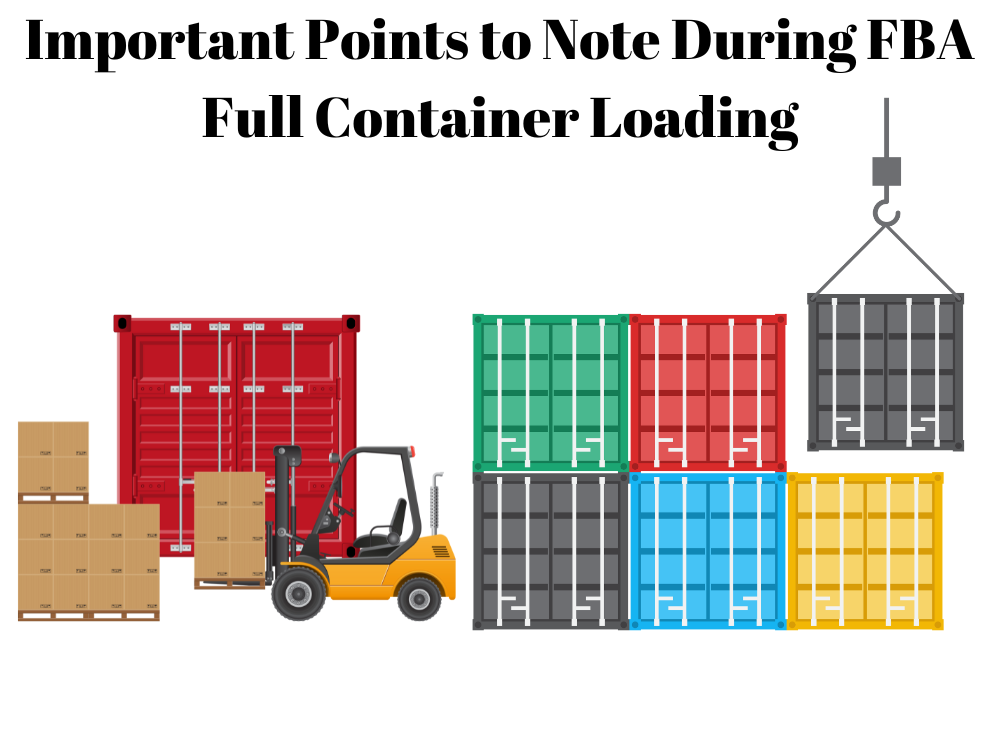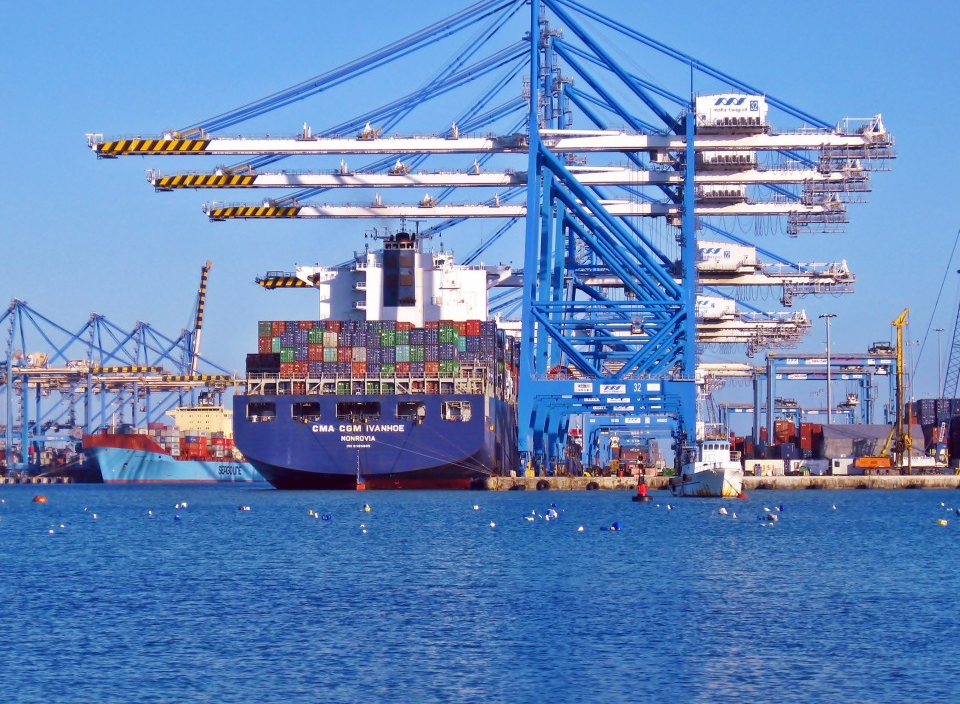For Amazon sellers using non-DDP (Delivery Duty Unpaid) ocean shipping, managing customs clearance and taxes can feel overwhelming. Unlike DDP (Delivery Duty Paid) services, non-DDP shifts compliance responsibilities to the seller, requiring meticulous preparation and knowledge of international trade rules. This guide breaks down the process into actionable steps, helping you avoid delays, fines, and unexpected costs while ensuring smooth delivery to FBA warehouses.Step 1: Document PreparationSuccessful customs clearance starts with accurate paperwork. Essential documents include:A commercial invoice detailing product descriptions, prices, and Incoterms (e.g., FOB).A packing list specifying box weights, dimensions, and contents.A bill of lading issued by the shipping carrier.Product-specific certifications (e.g., FDA for food or FCC for electronics).Verified HS codes (6–10 digits) to determine duty rates.In the U.S., submit an Importer Security Filing (ISF) 24 hours before shipment loading. Missing or incorrect documents can trigger customs holds or fines.Step 2: Duty and Tax CalculationsTax liabilities depend on two components:Customs duties: Calculated as (product value + shipping + insurance) × duty rate (based on HS codes). For example, plastic goods (HS 3926.90) face a 3.4% U.S. duty rate.Additional fees:In the U.S., pay a 0.3464% Merchandise Processing Fee (MPF).In Europe, Value-Added Tax (VAT) ranges from 15% to 27% of the CIF (cost, insurance, freight) value.Always verify duty rates using official customs databases before shipping.Step 3: Risk Mitigation StrategiesAvoid common pitfalls:HS code disputes: Provide product composition details or manufacturing processes to support classifications. Request a binding ruling from customs (e.g., CBP Ruling in the U.S.) for high-value goods.Undervaluation audits: Declare at least 65–70% of the Amazon listing price. Customs may use platform prices to reassess undervalued shipments.Port delays: Schedule trucking and FBA appointments early. Most ports allow 5 free days for container pickup before charging demurrage fees (e.g., $150/day in Los Angeles).Step 4: Cost-Saving OpportunitiesOptimize expenses with these methods:Duty exemptions: Leverage trade agreements like USMCA for goods produced in Mexico or Canada.VAT deferral: In Europe, delay VAT payments by registering a local tax number.Bulk filings: Consolidate multiple shipments into one customs entry to reduce processing fees (e.g., U.S. MPF drops to $27.75 per filing).Step 5: Post-Clearance LogisticsAfter customs approval:Arrange drayage to Amazon warehouses within the free demurrage period.Secure FBA delivery appointments via Seller Central, especially during peak seasons.Verify FNSKU labels to prevent warehouse rejections. Mislabeled items incur $50+ remediation fees.FAQsHow long does customs clearance take?Simple declarations take 1–3 days. Complex items or inspections may extend this to 5–10 days.What if duties are overcharged?File an appeal within 90 days (use CBP Form 19 in the U.S.).How to handle rejected shipments?Choose between re-exporting (costly) or local destruction (requires environmental permits). Purchase abandonment insurance beforehand.ConclusionNon-DDP shipping offers cost savings but demands attention to detail. Start with small shipments and consider hybrid solutions like “customs-cleared non-DDP” services, where agents handle paperwork while you pay actual taxes. For high-volume sellers, transitioning to DDP can streamline operations as sales grow.Pro Tip: Regularly review customs updates and collaborate with China freight forwarders and local brokers who specialize in Amazon-bound cargo. By mastering these steps, you’ll minimize risks, reduce costs, and build a resilient supply chain for global expansion – from factory floors in Shenzhen to FBA warehouses worldwide.
2025-03-03
11
Amazon FBA
Freight Rate
Overseas Warehouses
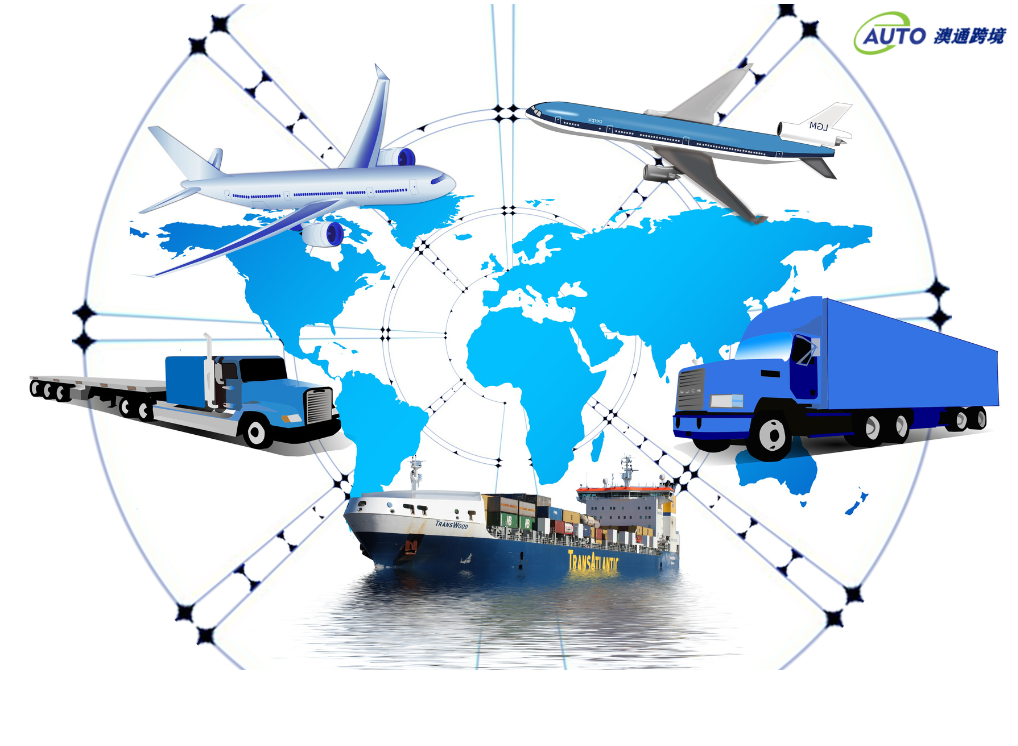
As an Amazon seller, I’ve learned the hard way that packaging can make or break your FBA business. Let me share exactly how to select materials that protect your products, pass Amazon’s strict checks, and keep costs under control—based on seven years of trial-and-error experience. Partnering with a trusted china freight forwarder early in the process can also streamline your supply chain, ensuring materials meet both Amazon’s standards and international shipping regulations.Thermal Printers & LabelsEvery seasoned seller knows this truth: poor-quality labels lead to warehouse rejections . I recommend investing in a commercial-grade thermal printer like the Rollo Wireless. Pair it with 4x6 inch thermal labels that meet Amazon’s 300 dpi resolution requirement. For product labels, use either 2x1 inch or 3x1 inch sizes, and always opt for waterproof polyester labels—they survive humidity 3x longer than paper alternatives.Master Carton SpecificationsLast month, a client’s 60.5 cm carton triggered Amazon’s oversized penalty. Here’s the golden rule: never exceed 60 cm on any side for standard shipments . Use double-walled corrugated boxes with 32 ECT strength ratings. For U.S.-bound shipments, include a 2x2 inch “Made in China” label in permanent ink—not stickers. Pro tip: Source boxes with pre-printed FBA compliance marks to speed up receiving.FBA LabelingYour product labels need military-grade durability. I’ve tested 12 materials and found that synthetic polyester labels with permanent acrylic adhesive withstand:-20°C warehouse freezers48-hour salt spray tests (simulating ocean shipping)100+ rubs with isopropyl alcoholFor outer boxes, use 4x4 inch labels placed 5 cm from the top edge. Always leave 1.5 cm clearance around barcodes—Amazon’s scanners need this breathing room.Packaging TapeThrough infrared scans at Amazon fulfillment centers, I discovered that taped seams must cover 70-80% of box length . Use 2-inch clear polypropylene tape with 60+ pound tensile strength. Avoid colored tapes—they trigger unnecessary customs inspections. My go-to: 3M’s Box Sealing Tape 371+, which bonds in 30 seconds flat.Cushioning MaterialsBubble wrap thickness matters more than you think:3/16” for lightweight items (apparel, books)5/16” for moderate protection (electronics, ceramics)1/2” for heavy/fragile goods (machine parts, glass)For eco-conscious sellers, consider cornstarch-based packing peanuts that dissolve in water. They provide comparable protection to Styrofoam but decompose in 90 days.Fillers & Void ReductionAmazon’s dimensional weight pricing punishes empty space. Use automatic air pillow systems that fill voids within 2 seconds—I recommend the PadPox M1 for small operations. For manual packing, hexagonal paper fillers prevent shifting better than shredded material. Always maintain 5 cm of cushioning on all sides.SustainabilityUpgrade to FSC-certified boxes with 90% post-consumer waste content. My clients report 18% higher customer satisfaction scores when using plant-based inks for printing. For moisture-sensitive items, switch to seaweed-based barrier films—they block humidity as effectively as plastic but decompose in compost bins.Compliance TestingConduct three crucial tests before shipping:Drop Test : From 1.2 meters onto concrete (simulates belt drops)Vibration Test : 3 hours at 5-500 Hz frequency (mimics truck transport)Compression Test : 200 lbs force for 1 hour (stacking simulation)Invest in a $250 digital force gauge to measure cushioning effectiveness—it pays for itself by preventing just two damaged returns.Cost-Saving Strategies That Actually WorkNegotiate with suppliers using these proven tactics:Order 6-month supplies during Q1 (manufacturers offer 12-15% discounts)Combine orders with 3 other sellers to hit higher MOQ tiersSwitch to regional paper mills—local sourcing cuts freight costs by 40%FAQsCan I reuse Amazon’s packaging materials?Only if you completely remove all previous labels, tape, and markings. Residual glue traces cause 73% of reused box rejections.How often do packaging requirements change?Amazon updates guidelines quarterly. Subscribe to their Packaging News digest and set Google Alerts for “FBA rule changes.”What’s the biggest hidden packaging cost?Dimensional weight charges. Use slimmer boxes—reducing carton size by 20% typically saves 18-22% in shipping fees.Are custom-printed boxes worth the investment?Only for products over $50 retail price. Below that threshold, stick to stock boxes with insert cards.Final Checklist Before Shipping :✓ Verified box dimensions with digital calipers✓ Tested labels with alcohol wipe & freeze test✓ Confirmed cushioning meets ISTA 3A standards✓ Removed all non-Amazon barcodes/logo
2025-02-26
14
Amazon FBA
Freight Rate

As a seasoned Amazon seller managing thousands of FBA shipments, I’ve learned that precision in box specifications directly impacts profitability. Let’s explore the critical rules and strategies most sellers miss.US Requirements: Beyond the BasicsWhile many focus on the 63.5 cm rule, true compliance lies in overlooked details. A client recently saved 42% in fees by refining their box-sealing process.Box DimensionsThe 63.5 cm (25-inch) per-side limit is strict, but Amazon’s 2025 AI scanners measureinnerpost-sealing dimensions. Even 0.3 cm overages—the thickness of two credit cards—trigger rejections.Weight ThresholdsStandard: 22.68 kg (50 lbs)Heavy Items:50–75 lbs: "Team Lift" labels (top + side)75–100 lbs: "Mech Lift" labels (all sides)Over 100 lbs: Pre-approval via Seller CentralEU StandardsTransitioning to EU shipments introduces pallet complexities. A recent audit showed 63% of shipments failed basic compliance checks.Box SpecificationsMax per side: 63.5 cmPallet Rules:Base: 120 cm × 80 cmHeight: ≤180 cm (including wrap)Weight: ≤680 kgJapan’s Unique Compliance LandscapeJapan blends strict sizing with quality expectations. Last holiday season, 22% of Tokyo shipments were rejected for microscopic box flaws.Fragile Goods RequirementsUnder 30 kg: Blue "Fragile" labels (front/top)Over 30 kg: Shock-absorbent pallet basesPlexiglass: 3"×2" warning labelsCost OptimizationMastering dimensional weight calculations separates profitable sellers from strugglers. One client cut air costs by 58% through strategic resizing.Dimensional Weight FormulaFor air shipments:Dimensional Weight=Length (cm)×Width×Height139Dimensional Weight=139Length (cm)×Width×HeightExample: A 60×40×30 cm box weighing 15 kg incurs charges for518.5 kg—34.5x actual weight.2025 Policy Updates Requiring ActionAmazon’s automation demands adaptation. Early adopters report 31% fewer shipment holds.AI Scanners (Q3): Reject boxes exceeding limits by ±0.2 cmDynamic Pricing: Costs adjust in real-time based on box densityEco Penalties: 5% surcharge for non-recyclables (effective October)FAQsThese questions stem from recurring issues in my consulting practice.How strict is the 25-inch rule?Amazon’s Chicago center rejected 127 of my boxes for 25.1-inch measurements. Factor in cardboard expansion during humidity shifts.Can I reuse Amazon boxes?Only with complete logo removal. Residual glue caused 68% of my 2024 scanning failures.Compliance ChecklistThis list prevented $1.2M in penalties for clients last year:Use ECT-32 corrugated boxes with ≤3 cm internal voidsApply waterproof labels with 200% ink coveragePre-shipment tests:3-foot drop test150% stack-height compression testBy implementing these strategies, sellers reduce costs by 19–42% annually. In Amazon’s ecosystem,compliance is about strategic optimization, not just rule-following.
2025-02-25
12
Amazon FBA
Freight Rate
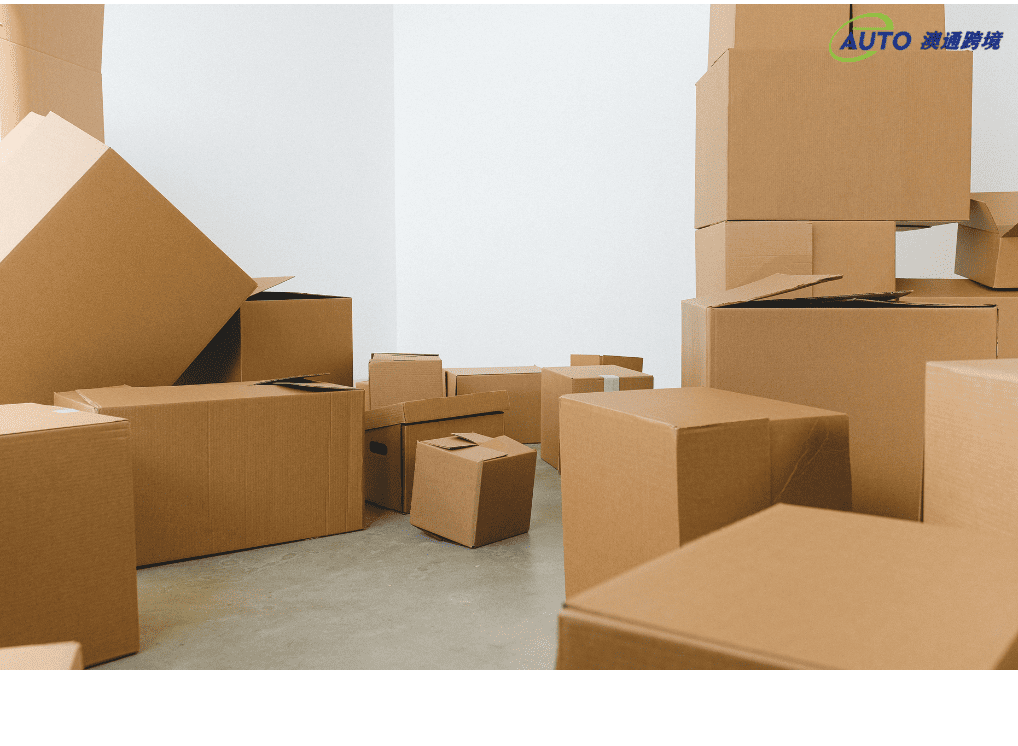
As an e-commerce seller utilizing Amazon FBA (Fulfilled by Amazon), understanding the differences between Full Container Load (FCL) and Less than Container Load (LCL) is crucial for optimizing your shipping costs. Let's explore how these two shipping methods differ in terms of logistics costs during the initial phase of the FBA process.The Basics of FCL vs LCLFCL means having an entire shipping container dedicated to your goods, while LCL involves sharing container space with other shippers' products. The key distinction lies in the cost structure: FCL typically offers better per-unit rates for large shipments, while LCL provides more flexibility for smaller shipments, albeit at a potentially higher per-unit cost.Logistics Costs for FCL vs LCL: What You Need to KnowFull Container Load (FCL)When opting for FCL, you're investing in an entire container. The efficiency of this choice becomes apparent as container utilization increases.Cost Efficiency: The correlation between volume and cost-effectiveness is straightforward - higher container utilization leads to lower per-unit costs. For instance, utilizing 80% of a 40-foot container distributes costs more efficiently across your inventory.Predictable Costs: FCL offers more stable cost structures. Once you've secured your container rate, additional fees are typically limited to standard port charges.Less than Container Load (LCL)LCL provides flexibility but comes with its own cost considerations. Since you're sharing space, the pricing structure differs significantly from FCL.Higher Cost Per Unit: LCL pricing is based on the specific space your goods occupy, which often results in higher per-unit costs for smaller shipments.Frequent Additional Charges: LCL shipments typically incur extra fees for handling, storage, and port operations, as your goods require additional processing within shared containers.More Flexible for Smaller Shipments: LCL enables efficient shipping of smaller quantities without paying for unused container space.Key Factors Influencing CostsSeveral critical factors affect your choice between FCL and LCL:Volume of GoodsFCL: Greater volumes translate to enhanced cost efficiencyLCL: Optimal for smaller shipments despite higher per-unit costsDestination and Port FeesFCL: More stable costs with standardized container handling feesLCL: Higher handling charges due to goods separation requirementsTransit TimeFCL: Typically faster with dedicated container priorityLCL: Longer transit times due to consolidation requirementsRisk ManagementFCL: Reduced handling means lower damage riskLCL: Slightly higher risk due to shared space and increased handlingWhen to Choose FCL or LCLOptimal Scenarios for FCL:Large volume shipmentsTime-sensitive deliveriesNeed for predictable costsIdeal Conditions for LCL:Smaller quantity shipmentsFlexible delivery timelineAbility to manage additional handling feesHow to Optimize Your FBA First Leg Logistics CostsConsider these optimization strategies:Scale up order quantities when feasible to leverage FCL benefitsPartner with experienced freight forwardersAccount for transit times in inventory planningSecure appropriate insurance coverageFAQsWhat are the main costs associated with FCL shipments?Primary costs include container rental, port handling fees, and destination warehouse transportation.Why is LCL more expensive per unit than FCL?LCL's higher per-unit costs stem from space allocation pricing and additional handling requirements.Can I ship small quantities via FCL?While possible, it's typically not cost-effective unless you're utilizing a significant portion of the container.Is LCL slower than FCL?Yes, due to additional handling requirements and consolidation processes.ConclusionYour choice between FCL and LCL should align with your shipment volume, budget constraints, and timing requirements. FCL generally proves more cost-effective for larger shipments, while LCL offers valuable flexibility for smaller volumes - though additional fees should be carefully considered.Remember to evaluate all costs, including transit times, when selecting your shipping method to ensure optimal operations for your FBA business.
2025-02-12
46
Amazon FBA
Freight Rate

When shipping goods to Amazon FBA warehouses, choosing the right shipping method can significantly impact your overall logistics strategy. This decision affects costs, delivery times, and the success of your business.Sea Express and Sea Cart are two popular first-mile shipping options for FBA sellers. However, these two methods each have distinct characteristics that may suit different business needs.Both services help Amazon sellers transport goods to FBA warehouses, but understanding the differences between them can help you save time and reduce costs in the long run.This article compares Sea Express and Sea Cart, looking at transportation methods, cost structures, delivery speed, and the types of products best suited for each.By understanding these differences, sellers can make informed decisions based on their unique needs and business requirements.Transportation Method and FlexibilitySea Express:Sea Express combines both sea freight and air courier services to complete the delivery process.Goods are first shipped by sea to a destination port, and once the shipment reaches the port, the final leg of delivery is handled by an international air courier company.These courier companies then deliver the goods directly to the Amazon FBA warehouse.Process: The journey begins with sea freight. Once the goods arrive at the port, the last segment of the journey is handled by an air courier.Product Suitability: Ideal for smaller, lighter products such as electronics, clothing, and accessories.Flexibility: Sea Express is limited by the size and weight restrictions set by air courier services, making it suitable only for lightweight and small items.Sea Cart:Sea Cart follows a slightly different process. Like Sea Express, goods are first shipped by sea to a destination port.Once they arrive, however, the goods are transferred onto a truck for delivery directly to the Amazon FBA warehouse.Process: The goods travel via sea freight initially, but once they reach the port, they are delivered by truck.Product Suitability: This method works better for larger, bulkier, and heavier products, such as furniture, home appliances, and large electronics.Flexibility: Sea Cart has fewer restrictions regarding weight and size. This makes it more flexible for shipping larger items compared to air courier-based services.Cost Calculation MethodSea Express:The cost of Sea Express is generally calculated based on the weight of the shipment, usually in kilograms (KG).Since Sea Express is more suited to lightweight products, it is often a more affordable choice for small, heavy products.Cost Structure: Sea Express charges according to the weight of the goods. The price is calculated in kilograms.Additional Services: Sea Express often includes customs clearance and taxes paid services, simplifying international shipping and customs processes for the seller.Sea Cart:Sea Cart, on the other hand, calculates shipping costs based on volume rather than weight.Shipping costs are usually measured in Cubic Meters (CBM), which makes Sea Cart ideal for shipping bulkier items that may not be particularly heavy but take up more space.Cost Structure: Sea Cart pricing is based on volume, which is typically measured in Cubic Meters (CBM).Volume Optimization: Sea Cart is more economical for shipments with a higher volume but lower weight. Sellers can maximize cost-efficiency by optimizing container space.Delivery Speed and StabilitySea Express:Sea Express offers faster delivery times compared to Sea Cart.This is because Sea Express uses air courier services for the final leg of the journey, which helps speed up the overall delivery time, particularly for smaller shipments.Delivery Speed: Sea Express delivers within 3-7 days. The use of air courier services makes this method faster.Stability: Despite its faster delivery, Sea Express can experience delays, especially during peak periods or if there are complications at the ports. Factors such as increased demand, port congestion, or air traffic disruptions can lead to delays.Sea Cart:Sea Cart tends to have slower delivery times than Sea Express because it primarily relies on sea freight and truck transportation for delivery.However, Sea Cart provides greater stability due to the fewer variables involved in the shipping process.Delivery Speed: Sea Cart typically delivers within 5-10 days, depending on the distance from the port to the FBA warehouse.Stability: Sea Cart is less affected by air traffic or port congestion, which makes it a more reliable and stable option for deliveries, especially in busy seasons.Shipping RestrictionsSea Express:Sea Express is more limited by size and weight restrictions due to its reliance on air courier services.For example, individual packages typically cannot exceed 30 kg in weight, and the length of any side should not exceed 120 cm.This makes Sea Express unsuitable for larger or bulkier items that may not meet these restrictions.Weight Limit: Packages should not exceed 30 kg in weight.Size Limit: The maximum length of any side should be 120 cm.Product Suitability: Sea Express is ideal for smaller, lighter goods, but not for oversized or heavy shipments.Sea Cart:Sea Cart has fewer restrictions when it comes to size and weight.Since it relies on sea freight and truck transport, this method can accommodate larger and heavier products.Weight and Size Flexibility: Sea Cart is better suited for large, bulky items. There are minimal restrictions regarding weight and size.Product Suitability: If you're shipping oversized items, Sea Cart is the more suitable option due to its flexible nature.Applicable ScenariosSea Express:Sea Express is best suited for smaller and lighter items that need to be shipped quickly.This method is ideal for products that require fast restocking or for sellers who need quick turnover of inventory.Best For: Smaller, lightweight products.Use Case: Sea Express is ideal for fast-moving products like electronics, fashion accessories, or small home goods.Shipping Frequency: It works well for sellers who need to restock quickly or replenish their inventory rapidly.Sea Cart:Sea Cart is more appropriate for bulk shipments, larger goods, or for sellers looking to control shipping costs.For larger products or those with low urgency, Sea Cart is often the preferred method.Best For: Larger or bulkier items, or when cost control is the priority.Use Case: Ideal for shipping furniture, appliances, or large electronics.Shipping Frequency: Sea Cart is ideal for sellers shipping in bulk or those prioritizing low-cost logistics.Additional ConsiderationsSeasonal Delays:Both Sea Express and Sea Cart can face delays during peak shipping seasons like Chinese New Year, Black Friday, or Christmas.Shipping demand during these times tends to rise significantly, leading to possible disruptions.It's essential to plan ahead and expect additional time for processing and shipping during these periods.Sea Express: Susceptible to delays during peak seasons due to air traffic and congestion at international ports.Sea Cart: While it’s less affected by air traffic, sea freight can still face delays during busy periods, especially due to port congestion.Environmental Impact:Sea Cart is a more eco-friendly option compared to Sea Express.This is because air freight tends to consume more fuel and generate more carbon emissions compared to sea freight.For sellers looking to reduce their carbon footprint, Sea Cart is a better option.Sea Cart: More environmentally friendly due to the lower fuel consumption of sea freight.Sea Express: Uses air freight, which typically results in a higher carbon footprint.Optimizing Shipments:Effective packaging is crucial for both Sea Express and Sea Cart.With Sea Express, sellers need to consider packaging size and weight carefully to avoid additional fees.For Sea Cart, the focus should be on optimizing the use of available shipping container space, especially for large shipments.Sea Express: Be mindful of weight and size restrictions to avoid extra charges.Sea Cart: Maximize space utilization to make shipments more cost-effective.ConclusionChoosing between Sea Express and Sea Cart depends on the type of goods being shipped and the seller's priorities.Sea Express is a faster method, ideal for smaller, lightweight products that need quick delivery.Sea Cart, on the other hand, is better suited for bulkier, larger shipments, especially when cost control is a priority.By understanding the key differences in transportation methods, cost structures, delivery speeds, and product suitability, sellers can make more informed choices tailored to their needs.FAQsWhat is the main difference between Sea Express and Sea Cart for FBA shipping?Sea Express uses air courier for the final delivery, making it faster, while Sea Cart uses truck transport and is better for bulkier items.Which option is better for large items?Sea Cart is ideal for large, heavy, or bulky products due to fewer size and weight restrictions.How are shipping costs calculated for Sea Express and Sea Cart?Sea Express is based on weight, while Sea Cart is based on volume (CBM).
2025-02-06
6
Amazon FBA
Sea Freight
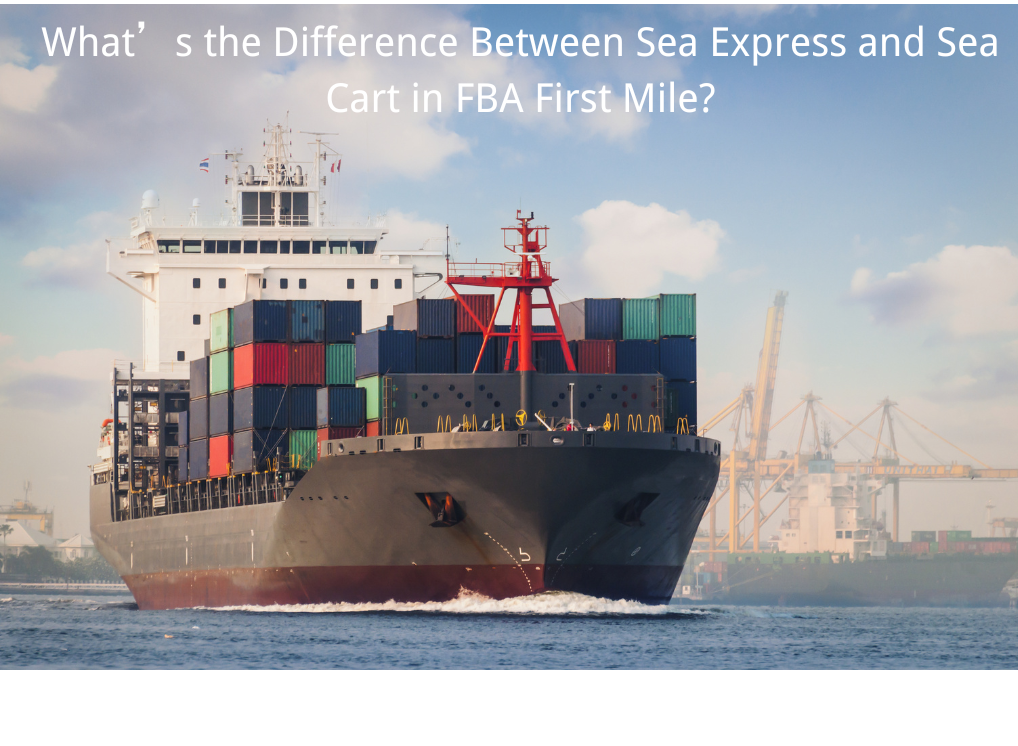
Managing logistics and shipping expenses is crucial for cross-border e-commerce sellers aiming to enhance profitability. By implementing strategic approaches, you can significantly reduce U.S. Fulfillment by Amazon (FBA) costs.Optimize Inventory ManagementEfficient inventory turnover is critical for minimizing expensive FBA storage fees. Regularly analyze sales velocity data to forecast demand more accurately. This prevents overstocking items that sit too long in Amazon’s warehouses, incurring additional storage fees. Utilize inventory management tools to set optimal reorder points and establish safety stock levels, ensuring a balance between supply and demand. Reduce Product Dimensional WeightCarriers and Amazon FBA charge based on the higher of actual weight or dimensional weight. To minimize costs:Optimize Packaging Size: Use compact packaging that provides adequate protection without excess space.Minimize Packaging Material: Choose lightweight yet durable materials to reduce overall package weight.Package Flattening: For certain products, consider packaging them in a flattened state to reduce dimensions.Understanding carrier dimensional weight pricing rules helps in optimizing packaging for cost efficiency. Leverage Amazon’s Partnered Carrier ProgramAmazon offers discounted shipping rates through its Partnered Carrier Program. By utilizing this service, you might find better rates than booking directly with carriers like UPS. This can lead to significant savings on shipping costs. Ship to the Nearest Fulfillment CenterAmazon allows you to choose which fulfillment center to send your inventory to. Opting for the closest possible locations can significantly reduce transit costs and delivery times, enhancing customer satisfaction. Consolidate ShipmentsShipping products in bulk enables you to take advantage of carrier volume discounts. Consolidating shipments reduces the number of deliveries, leading to lower overall shipping expenses. Ensure that your shipments comply with Amazon’s FBA guidelines to avoid additional fees. Utilize Amazon’s Buy Shipping DiscountsAmazon introduced a Sponsored Discount option that allows you to purchase shipping labels through Buy Shipping at a discounted rate. The number of labels you purchase determines how large a discount you receive, so research the program as well as the rates of other carriers. Offer Free ShippingOffering fast and free shipping can have a significant impact on your business:Increase Conversions: Customers are more likely to complete a purchase when free shipping is offered.Boost Customer Satisfaction: Free shipping enhances the overall shopping experience.Raise Average Order Value: Customers may add more items to their cart to qualify for free shipping.Utilizing Amazon FBA allows you to offer free shipping without managing the logistics yourself. Regularly Review and Adjust PricingKeep an eye on your product pricing and adjust it to accommodate changes in Amazon’s fee structure. This can help maintain profitability even when fees change. Strategic pricing adjustments may temporarily reduce margins but can effectively move stagnant inventory. Partner with Experienced Freight ForwardersCollaborating with experienced freight forwarders can provide valuable insights into cost-saving opportunities. They can negotiate better rates with carriers due to their volume of business and offer tailored solutions to meet your specific shipping needs. Stay Informed and AdaptAmazon periodically updates its FBA policies and fee structures. Staying informed about these changes allows you to adapt your strategies accordingly, ensuring continued profitability. Regularly review Amazon’s Seller Central updates and participate in seller forums to exchange insights with other sellers. By implementing these strategies, you can effectively manage and reduce your U.S. FBA logistics and shipping costs, leading to improved profitability and a more sustainable e-commerce business.
2025-02-05
5
Sea Freight
Air Freight
Amazon FBA
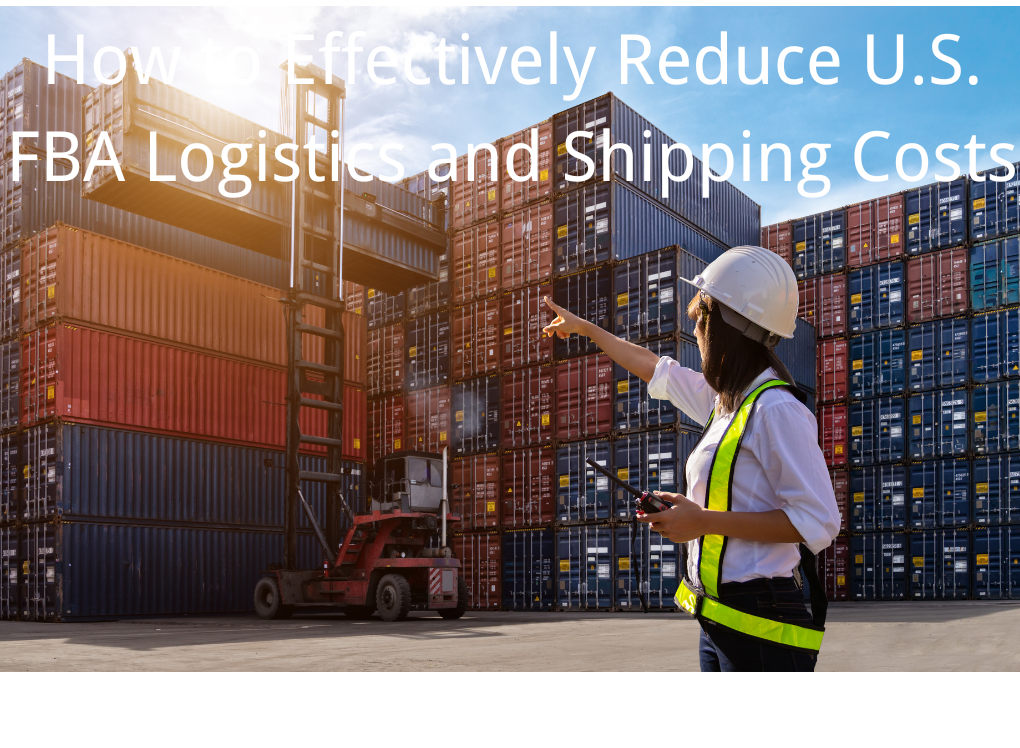
Navigating the complexities of international shipping can be daunting for Amazon sellers. One solution that has gained traction is FBA Dual Customs Clearance & Taxes Included. This comprehensive logistics service simplifies the process, ensuring your products reach Amazon’s warehouses smoothly and efficiently. In this article, we’ll delve into what dual customs clearance and taxes included mean for your FBA business, how it works, and the benefits and considerations you should be aware of.What is FBA Dual Customs Clearance & Taxes Included?FBA Dual Customs Clearance & Taxes Included is a logistics service tailored for Amazon sellers that covers the entire shipping journey from your warehouse in China to Amazon’s FBA warehouses in your target country, such as the United States. This service encompasses two main components:1. Dual Customs ClearanceDual customs clearance refers to the handling of customs procedures both in the exporting country (e.g., China) and the importing country (e.g., USA).Export Customs Clearance: In the exporting country, the logistics provider manages all necessary export declarations and paperwork. This ensures that your goods comply with local export regulations and are cleared for shipment.Import Customs Clearance: Upon arrival in the destination country, the same logistics provider takes care of the import customs process. They handle the necessary documentation, inspections, and any other requirements to ensure your products pass through customs without delays.2. Taxes IncludedTaxes included means that the logistics provider’s quote encompasses all potential import duties, Value-Added Tax (VAT), and other related fees. As a seller, you won’t need to worry about these additional costs because they are already factored into the service fee.How Does It Work?Here’s a step-by-step overview of how FBA Dual Customs Clearance & Taxes Included operates:Pickup from Your Warehouse: The logistics provider collects your products from your warehouse.International Shipping: Your goods are transported via air or sea to the destination country.Export and Import Customs: The provider handles both export and import customs clearance, ensuring compliance with all regulations.Tax Payment: All applicable duties and taxes are calculated and included in the service fee.Delivery to Amazon FBA: Finally, the products are delivered directly to Amazon’s FBA warehouses, ready for fulfillment.Benefits of Dual Customs Clearance & Taxes Included1. Simplified ProcessHandling customs can be complex and time-consuming. By opting for a dual customs clearance service, you delegate this responsibility to experts, allowing you to focus on growing your business.2. Cost PredictabilityWith taxes and duties included in the service fee, you avoid unexpected expenses. This transparency helps you manage your budget more effectively.3. Faster ShippingProfessional handling of customs procedures can significantly reduce delays, ensuring your products reach Amazon’s warehouses promptly and remain available for sale.4. Compliance AssuranceLogistics providers experienced in international shipping are well-versed in the latest regulations. This reduces the risk of non-compliance, which can lead to fines or seized goods.When to Use Dual Customs Clearance & Taxes IncludedThis service is particularly beneficial for sellers who:Lack Expertise: If you’re unfamiliar with the intricacies of international shipping and customs regulations.Seek Efficiency: When you want to streamline your logistics process and minimize delays.Prefer Predictable Costs: If you want to include all potential fees in your shipping budget.Handle Special Goods: When your products require special handling or documentation for customs clearance.Risks and ConsiderationsWhile FBA Dual Customs Clearance & Taxes Included offers many advantages, it’s essential to be aware of potential risks:1. Ownership and Tax IssuesUsing a freight forwarder’s TAX/VAT/EORI number can sometimes lead to issues with ownership rights and the inability to claim import VAT deductions. Ownership of goods during international shipping can become blurry if your logistics provider handles the customs process using their own tax identification. This might prevent you from claiming import VAT refunds, which could have been beneficial if you were the Importing Party. You need to ensure that your agreement with the logistics provider clearly defines these aspects to avoid complications with the tax authorities.2. Regulatory ComplianceIncreasingly stringent tax and customs regulations, especially in regions like Europe and the USA, can pose legal and financial risks. Failing to comply with evolving regulations could result in fines, delays, or even seized goods. For example, some goods require special documentation or certifications, and missing these requirements can halt shipments in customs.3. Seasonal Limitations and Storage ChallengesIn busy periods, such as Black Friday or holiday seasons, Amazon’s FBA warehouses often experience storage limitations. This can result in costly delays or restrictions on the amount of inventory you can send to Amazon. Choosing an FBA logistics provider who understands these seasonal challenges and can plan shipments accordingly can help mitigate this issue.Choosing the Right ProviderSelecting a trustworthy logistics partner is crucial. Ensure they have a solid track record, understand your specific needs, and comply with all relevant regulations to avoid potential legal and economic losses. Here are some best practices for choosing the right provider:Experience with Amazon FBA: Make sure your logistics provider has experience working specifically with Amazon FBA. This ensures they understand the specific packaging, labeling, and documentation requirements for FBA shipments.Clear and Transparent Pricing: Request detailed pricing breakdowns, including all potential extra charges such as cargo insurance, documentation fees, and customs clearance charges. This helps you avoid hidden costs during the shipping process.Check for Compliance and Certifications: Ensure the provider complies with all customs, VAT, and import/export regulations. The logistics provider should be able to provide evidence of tax registration or customs certification to avoid complications during customs processing.Capacity to Handle Seasonal Peaks: Choose a logistics partner who can adjust to peak seasons by managing warehouse space and timely shipping to prevent storage restrictions at Amazon's FBA warehouses.Customer Service & Problem Resolution: A reliable logistics provider should offer prompt customer service and the ability to resolve any issues quickly, especially when things go wrong during transit or customs clearance.Best Practices for Using Dual Customs Clearance & Taxes Included1. Choose Reputable ProvidersResearch and select logistics companies with proven expertise in dual customs clearance and tax-inclusive services. Look for reviews, testimonials, and case studies that demonstrate their reliability.2. Ensure ComplianceStay informed about the latest customs and tax regulations in your target market. Collaborate closely with your logistics provider to ensure all documentation and procedures are up to date.3. Plan for ContingenciesDespite thorough planning, unexpected issues can arise. Have a contingency plan in place to handle delays or complications in customs clearance. Ensure you have the contact details of both your provider and Amazon’s support team to resolve issues quickly.4. Monitor and ReviewRegularly review your logistics process and costs. This helps identify areas for improvement and ensures you’re getting the best value from your logistics provider. Continuously track changes in tax and customs regulations to adjust your process as needed.ConclusionFBA Dual Customs Clearance & Taxes Included is a valuable service for Amazon sellers looking to simplify their international shipping and logistics. By handling both export and import customs procedures and including all relevant taxes in the service fee, this solution offers a streamlined, cost-effective way to manage your FBA shipments. However, it’s essential to choose a reputable provider and stay informed about regulatory requirements to maximize the benefits and minimize potential risks.Embracing this comprehensive logistics service can free you from the complexities of international shipping, allowing you to focus on what truly matters—growing your Amazon business and reaching customers worldwide.
2025-01-08
17
Amazon FBA
Freight Rate
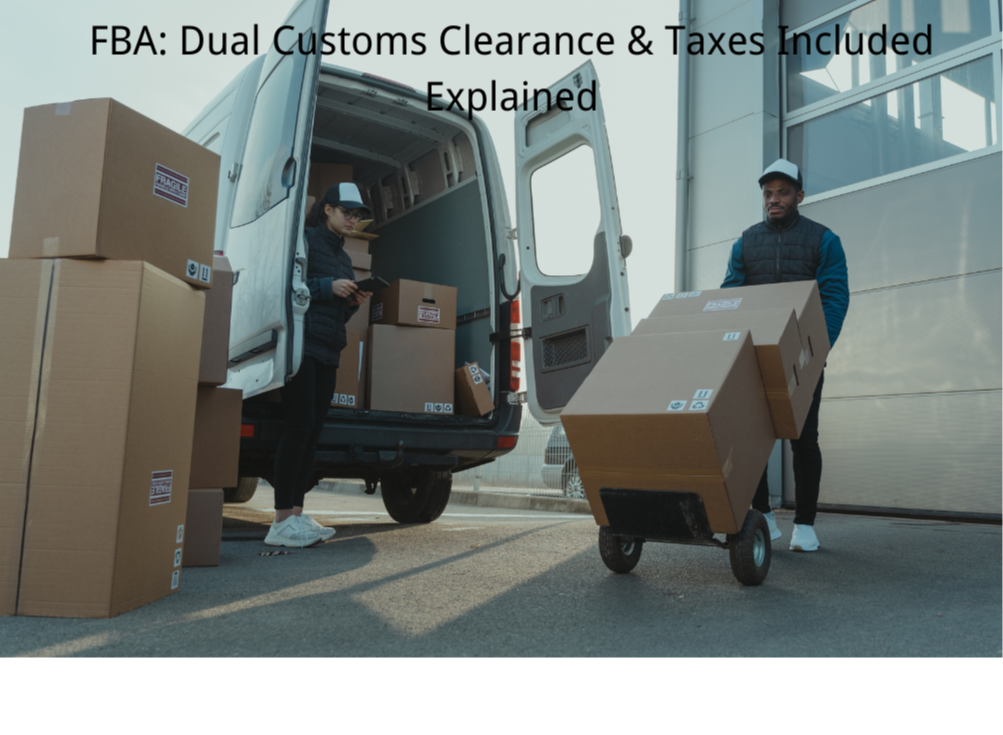
Navigating Amazon's Fulfillment by Amazon (FBA) system can be a game-changer for your e-commerce business. However, ensuring your products are correctly labeled is crucial for smooth operations. In FBA, product labels (FNSKU labels) and shipment labels serve distinct purposes. Understanding the differences between these labels can help you avoid costly mistakes and streamline your logistics process. Here's a comprehensive guide to help you distinguish between product labels and shipment labels in FBA.Understanding the Two Types of LabelsTo effectively manage your inventory and shipments within Amazon's FBA system, it's essential to grasp the fundamental differences between product and shipment labels. Both labels play pivotal roles, but they serve unique functions that cater to different aspects of the fulfillment process. To understand their specific purposes and applications, let's delve deeper into each type.Product Labels (FNSKU Labels)FNSKU stands for Fulfillment Network Stock Keeping Unit. These labels are unique identifiers Amazon assigns to each product you sell through FBA.Identification: FNSKU labels are unique to each product, allowing Amazon to track inventory accurately. They typically start with prefixes like "XOO" or "B0" and overlay the product's original barcode.Application: Each product unit must have an FNSKU label attached to its packaging. This ensures that Amazon can identify and manage each item separately within its vast fulfillment network.Purpose: The primary role of FNSKU labels is to enable Amazon's system to recognize and track your inventory. This ensures that products are correctly stored, picked, and shipped to customers, maintaining the integrity of your stock.Shipment LabelsShipment labels differ from product labels and are used to manage the overall shipment sent to Amazon's warehouses.Outer Package Identification: Shipment labels are affixed to the exterior of the boxes you send to Amazon. These labels include a shipment ID (e.g., FBAXXXXXX) and a shipment number.Multiple Box Identification: If your shipment consists of multiple boxes, each box will have a unique identifier like U001, U002, etc. This helps Amazon distinguish between different boxes within the same shipment.Purpose: Shipment labels facilitate the efficient handling of your packages upon arrival at Amazon's fulfillment centers. They help warehouse staff quickly verify which shipment the boxes belong to and ensure accurate processing and storage.Key Differences Between Product Labels and Shipment LabelsUnderstanding the distinct roles of product and shipment labels is crucial for maintaining an organized and efficient FBA process. Here are the primary differences that set them apart:Usage ContextProduct Labels: These are used for individual product identification within Amazon's inventory system. Each product unit in your shipment must have its own FNSKU label.Shipment Labels: Used for managing entire shipments and their constituent boxes. These labels are only applied once per box, regardless of the number of products inside.Application ProcessProduct Labels: You must print and apply an FNSKU label to every product unit. This requires careful attention to ensure each item is correctly labeled before shipping.Shipment Labels: Print a shipment label for each box in your shipment. The number of shipment labels corresponds to the number of boxes you send to Amazon.Visual IdentificationProduct Labels: Typically smaller and placed directly on the product's packaging, covering the original barcode. They contain the FNSKU code, which is unique to each product.Shipment Labels: Larger and placed on the outside of the shipping boxes. They include shipment IDs and box numbers, making them easily visible for quick identification.Practical Scenarios: When to Use Each LabelTo ensure your shipments are processed smoothly, knowing when and how to use each type of label effectively is important. Here are some common scenarios:Single Product ShipmentIf you're sending a shipment containing only one type of product, each unit will have an FNSKU label, and each box will have a shipment label. This ensures that both individual products and the overall shipment are properly tracked.Multiple Product ShipmentEach product unit will still require an FNSKU label for shipments containing different types of products. Additionally, each box will need a shipment label with a unique box number to differentiate between the various products inside.Printing and Applying LabelsCorrectly printing and applying labels is crucial to avoid errors during fulfillment. Here's how to handle each type of label:Printing Product LabelsQuantity: Print one FNSKU label for each product unit in your shipment.Quality: Use a high-quality printer to ensure the barcode is clear and scannable. Blurry or smudged labels can lead to scanning errors and inventory issues.Placement: Place the FNSKU label outside the product's packaging, covering the original barcode if necessary. Ensure it's easily accessible for scanning.Printing Shipment LabelsQuantity: Print one shipment label for each box in your shipment.Visibility: Attach the shipment label to a flat surface outside the box. Avoid placing labels on seams or corners where they might be obscured.Durability: Use durable label paper to withstand handling and transportation without tearing or fading.Best Practices for Labeling in FBAImplementing best practices for labeling can significantly enhance the efficiency and accuracy of your FBA operations. Here are some recommendations:Double-Check Requirements: Always refer to Amazon's latest FBA labeling guidelines to ensure compliance. Requirements may change, and staying updated helps avoid mistakes.Organize Your Shipment: Clearly label each box and product to streamline the receiving process at Amazon's warehouses. Organized shipments reduce the risk of errors and delays.Use Labeling Software: Consider using specialized FBA labeling software to automate the process, especially for larger shipments. This can save time and minimize human error.Test Scannability: Before finalizing your shipment, test the scannability of your labels to ensure Amazon's systems can read them without issues.Keep Backup Labels: Have spare labels on hand in case of printing errors or damaged labels. This ensures you can quickly replace any problematic labels without disrupting your shipment timeline.ConclusionCorrectly distinguishing and applying product labels (FNSKU) and shipment labels is essential for a seamless FBA experience. By understanding their differences and following best practices, you can ensure your products are accurately tracked and efficiently processed within Amazon's fulfillment network. Proper labeling prevents inventory errors and enhances your overall logistics efficiency, contributing to better customer satisfaction and business growth.For more detailed information, always refer to Amazon's FBA Labeling Guidelines and stay updated with any policy changes to maintain compliance and optimize your FBA operations.
2025-01-06
15
Amazon FBA
Overseas Warehouses
Sea Freight
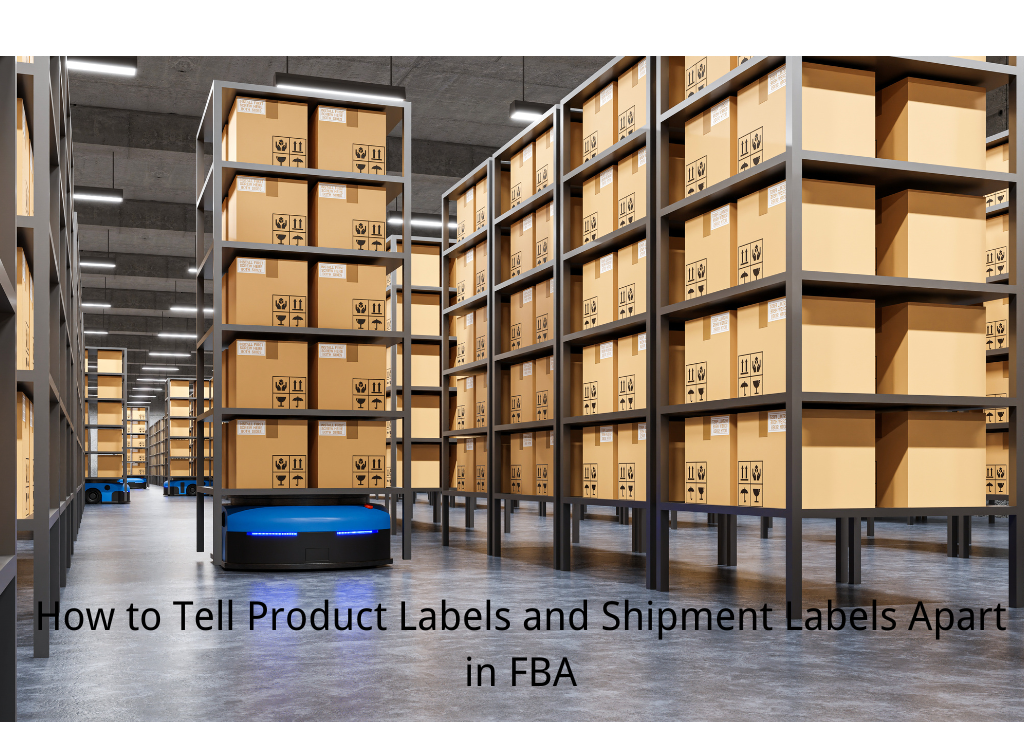
Shipping oversized items to Amazon FBA isn’t as straightforward as just packing your goods and sending them off.Whether you’re handling your own shipments or working with a China freight forwarder, there are rules and regulations you absolutely need to follow to avoid costly mistakes.Imagine this: You ship a 120-pound couch without the right labels or packaging, and it gets rejected at the FBA warehouse.Or, even worse, you end up paying hefty fees for non-compliance. This isn’t just a hassle – it’s a drain on your profits.That’s why it’s crucial to know the ins and outs of oversized shipping before you even pack your boxes. Let’s dive into the essential tips for making sure your oversized items make it to Amazon’s FBA warehouse without any issues.Understand Amazon’s Size and Weight RulesAmazon loves rules, and oversized items have their own playbook. Mess this up, and your shipment could get rejected, cost more, or take forever to check in. Here’s what you need to know:Size LimitsStandard-sized boxes: Any side can’t exceed 64 centimeters.Oversized items: Must ship in individual boxes – no bundling multiple oversized products together.Packaging after assembly: If your item is already pushing size limits, make sure the packaging doesn’t tip it over Amazon’s maximum size requirements.Weight RegulationsItems over 100 lbs (45 kg): Add a “Mech Lift” label so everyone knows a machine is required.Items 50–100 lbs (22.5–45 kg): Use a “Team Lift” label to indicate team handling.Jewelry and watches: Keep the box weight under 40 lbs (18 kg). Yeah, they’re picky like that.Nail the Packaging – No Room for ErrorsPackaging isn’t just about looking professional – it’s about surviving the journey.Here’s How to Pack Like a Pro:Use six-sided hard boxes – no floppy cardboard that crumbles under pressure.Clear old labels before slapping on new ones. Trust me, mixed-up barcodes are a nightmare.Add Amazon-specific labels on every box – these are non-negotiable.For bulk shipments? Label both the outer big box and every inner box.Bonus Tip:Fill empty spaces with high-quality padding to prevent internal movement. Shipping is like bumper cars – your items will take a hit, but good padding keeps them intact.Pre-Label and Prep Like It’s Your Job (Because It Is)Amazon’s system relies on labels. Without proper prep, your inventory could disappear into the void.Individual item packaging: Use bubble wrap, foam, or whatever it takes to keep your products secure.Right-sized boxes: Avoid oversized boxes with too much empty space – they’re more prone to damage.Unique labels: Every item and box needs its own unique label to avoid mix-ups.If You’re Using Pallets, Do It RightPallets aren’t just for giant warehouses. They’re your best friend for heavy-duty shipping. But Amazon’s picky about this too:Pre-schedule your pallet delivery. Show up unannounced? That’s a quick way to get turned away.Make sure your pallets meet Amazon’s size and material standards.Label both pallets and individual boxes.Cost Control – Don’t Bleed MoneyShipping oversized items is already pricey, but you can still control your costs. Here’s how:Dimensional weight pricing: Carriers charge by size AND weight. Pack efficiently to avoid paying for wasted space.Use freight forwarders that specialize in FBA to save on international shipments.Try using Amazon’s partnered carrier programs for bulk discounts.Avoid Rookie MistakesDon’t learn the hard way. Here are the most common mistakes sellers make – and how to avoid them:Ignoring weight and size rules: Even 1 cm over the limit could trigger extra fees or rejection.Old labels: Forgetting to clear them leads to massive delays.Insecure packaging: Fragile items WILL get damaged if not properly packed.Always Follow Amazon’s Rules – No ShortcutsAmazon doesn’t mess around. If you cut corners, expect rejected inventory, hefty fees, or worse – your account suspended.Follow their rules for:Safety requirementsLabeling and prepSpecific product restrictionsLet’s Make This RealImagine this: You ship a 120 lb couch to Amazon without a “Mech Lift” label. It arrives damaged, gets flagged as unsafe, and you’re charged return fees. Ouch, right?Now imagine you followed the rules. Same couch arrives intact, Amazon stocks it seamlessly, and you start making money. The choice is obvious.FAQsCan I bundle multiple oversized items in one box?Nope. Amazon requires oversized items to ship individually.What’s the most cost-effective way to ship oversized items?Use freight forwarders or Amazon’s partnered carrier programs. These can save you money, especially for international shipments.What happens if my shipment doesn’t meet Amazon’s requirements?Your items could be rejected, returned, or even destroyed – and you’ll foot the bill.Final WordsShipping oversized items to Amazon FBA isn’t rocket science, but it does take some effort.Get the size and weight right. Nail the packaging. Follow Amazon’s rules like your business depends on it – because it does.Start small, test your process, and keep optimizing.Shipping smarter means happier customers, smoother operations, and more money in your pocket.And who doesn’t want that?
2024-12-03
41
Amazon FBA
Overseas Warehouses
Sea Freight
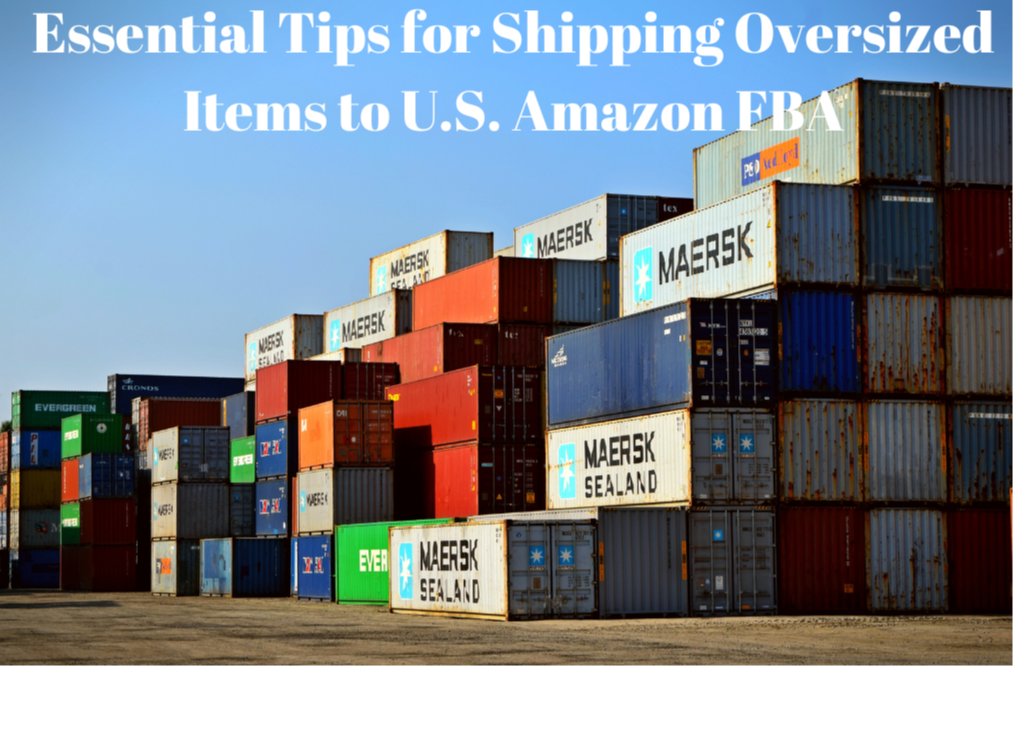
When preparing for FBA (Fulfilled by Amazon) full container loading, it's crucial to follow these key steps to ensure the safety of your goods and smooth delivery to Amazon warehouses. By adhering to these guidelines, you can minimize risks, streamline the process, and ensure compliance with Amazon’s requirements.1. Product PackagingProper packaging is the foundation of safe and efficient transport.Use Durable Cartons:Ensure products are packed in sturdy corrugated cartons that can withstand the rigors of transit. Reinforce the interior with custom foam or padding to prevent deformation or damage during shipping.Check for Damage:Inspect all packaging for rips, tears, or other damage. Amazon often rejects goods with damaged or deformed packaging.Seal Securely:Use strong packing tape to seal cartons, avoiding any chance of accidental opening during transit.2. Correct LabelingAccurate labeling is essential for Amazon to process your shipment smoothly.FBA Labels:Ensure every product and carton has the correct FBA label, which must be scannable and free of smudges or scratches.Special Handling Labels:For cartons weighing over 50 pounds, apply a "Team Lift" label.For those exceeding 100 pounds, use a "MechLift" label.These labels are mandatory for compliance with Amazon’s handling requirements.Placement Tips:Avoid placing labels on carton seams or edges. They should be on a flat surface, fully visible.3. Compliance with Size and Weight LimitsAdhering to Amazon’s size and weight restrictions reduces the risk of delays or rejections.Weight Limits:No single carton should weigh over 50 pounds unless explicitly allowed for specific products or warehouse policies. Always verify weight regulations for your designated fulfillment center.Volume Restrictions:Ensure that cartons are not excessively large, as oversized boxes can create handling challenges and attract additional fees.Mark Oversized Cartons:If a carton exceeds standard dimensions or weight, clearly mark it as oversized to alert handlers and prevent mismanagement.4. Efficient Loading TechniquesProper loading techniques are critical to protecting your goods during transport and ensuring efficient unloading at the warehouse.Avoid Overloading or Underloading:Load cartons with balanced spacing. Avoid packing too tightly or too loosely to minimize movement during transit.Stair-Step Pattern Near Doors:Arrange the last two rows in a stair-step pattern. This configuration facilitates smoother unloading at Amazon’s docks.Leave Space at the Top:Maintain at least 8 inches (20 cm) of clearance at the top of the container to avoid issues with overhead beams or forklift access.Carton Gaps:Leave at least 3 inches (7.6 cm) between cartons to prevent them from getting stuck during handling.5. Implement Safety MeasuresTo prevent damage or shifting during transit, secure your shipment thoroughly.Space Between Last Row and Door:Leave a buffer zone of at least 8 inches (20 cm) between the last row of cartons and the container doors.Stabilizing Equipment:Use tools like dunnage bags, non-metal strapping, bracing rods, or safety nets to secure the cargo and prevent it from shifting. Avoid using sharp materials that might damage cartons.6. Prepare Necessary DocumentationBefore shipping, ensure that all required documents are completed and accurate.Customs Clearance Documents:Include detailed product descriptions, invoices, and any other paperwork necessary for customs processing.FBA Shipment Plan:Confirm that the shipment is accurately documented in your Amazon Seller Central account to avoid discrepancies.Backup Copies:Keep digital and physical copies of all shipping documents in case of emergencies.7. Understand FBA FeesHaving a clear understanding of FBA fees helps you budget effectively and avoid surprises.Storage Fees:Amazon charges storage fees based on the time your goods stay in their warehouse. Familiarize yourself with both standard and peak-season rates.Handling Costs:Oversized, heavy, or non-compliant shipments may incur extra handling charges.8. Insurance and Inventory MonitoringProtecting your shipment and tracking its journey are vital for peace of mind.Shipping Insurance:Purchase transportation insurance to cover any potential loss or damage during transit.Real-Time Monitoring:Use inventory tracking tools to monitor the shipment status and confirm its safe arrival at the designated FBA warehouse.Additional Tips for SuccessPartner with a reliable freight forwarder experienced in FBA shipments.Conduct a final inspection of the container before sealing it for transit.Maintain open communication with your logistics provider to address any last-minute issues.By following these steps, you can significantly reduce risks and streamline the process of delivering your FBA shipments to Amazon’s warehouses. Proper planning and meticulous execution will not only ensure compliance but also enhance your operational efficiency.FAQsWhat is the maximum weight allowed for FBA cartons?The maximum weight for FBA cartons is typically 50 pounds unless otherwise specified by Amazon.Why should I leave space at the top of the container?Leaving 8 inches of space helps prevent handling issues and ensures compliance with Amazon’s unloading procedures.What safety measures can prevent cargo shifting?Use dunnage bags, straps, or safety nets to secure goods and maintain stability during transit.
2024-11-26
26
Amazon FBA
Overseas Warehouses
